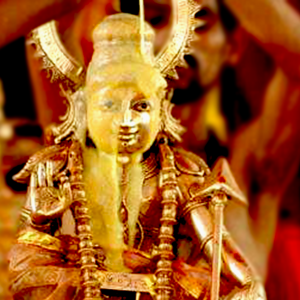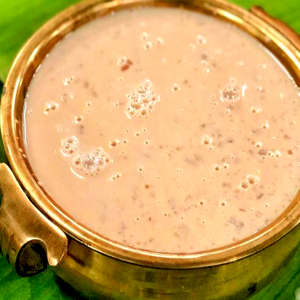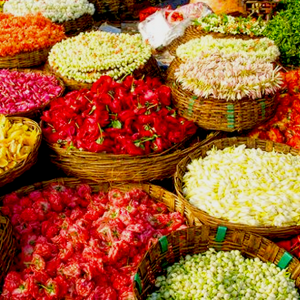Tulasi Mala (Swamy Ayyappa)
₹50
Tulasi is the most used pooja flower in Hindu temples mainly kerala. The name Tulasi means the incomparable one. A number of passages in the Puranas and other scriptures (Vedas), point to the importance of Tulasi within religious worship. Puranas like Vishnu Purana, Bhagavatha Purana, Devi Bhagavatha Purana and Padma Purana explains the glory and worship protocols of Tulasi in detail. Tulasi is regarded as a goddess and a consort of Lord Vishnu. Tulasi is worshipped as Tulasi Devi or Vrinda Devi. In Hindus, a household is considered incomplete if it doesn’t have a Tulasithara. The month of Karthika (October-November) is famous for Tulasi pooja. Three different types of Tulasi are used in temples. They are Rama Tulasi with stems and leaves of green, Krishna Tulasi with stems and sometimes also leaves of dark green, and Karppoora Tulasi with the smell of camphor. Kattu (Vana) Tulsai (Ocimum gratissimum) the wild form, is not used for poojas. All these types are used in Ayurveda. Tulasi exhibits great variation across its range. Variations in soil type and rainfall may also equate to a difference in the size and form of the plants as well as their medicinal strength and efficacy. Puranas mentions that pooja without the use of Thulasi is incomplete and hence worthless.
Description
Tulasi is the most used pooja flower in Hindu temples mainly kerala. The name Tulasi means the incomparable one. A number of passages in the Puranas and other scriptures (Vedas), point to the importance of Tulasi within religious worship. Puranas like Vishnu Purana, Bhagavatha Purana, Devi Bhagavatha Purana and Padma Purana explains the glory and worship protocols of Tulasi in detail. Tulasi is regarded as a goddess and a consort of Lord Vishnu. Tulasi is worshipped as Tulasi Devi or Vrinda Devi. In Hindus, a household is considered incomplete if it doesn’t have a Tulasithara. The month of Karthika (October-November) is famous for Tulasi pooja. Three different types of Tulasi are used in temples. They are Rama Tulasi with stems and leaves of green, Krishna Tulasi with stems and sometimes also leaves of dark green, and Karppoora Tulasi with the smell of camphor. Kattu (Vana) Tulsai (Ocimum gratissimum) the wild form, is not used for poojas. All these types are used in Ayurveda. Tulasi exhibits great variation across its range. Variations in soil type and rainfall may also equate to a difference in the size and form of the plants as well as their medicinal strength and efficacy. Puranas mentions that pooja without the use of Thulasi is incomplete and hence worthless.






Reviews
There are no reviews yet.